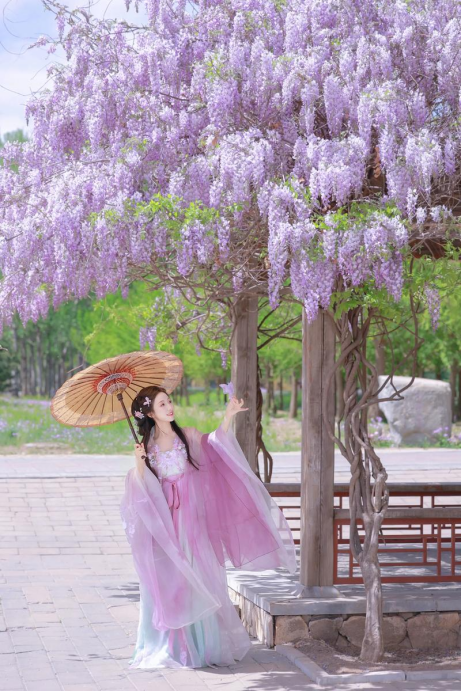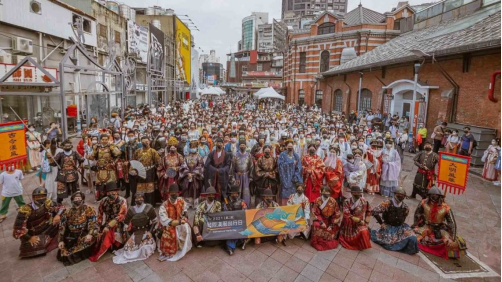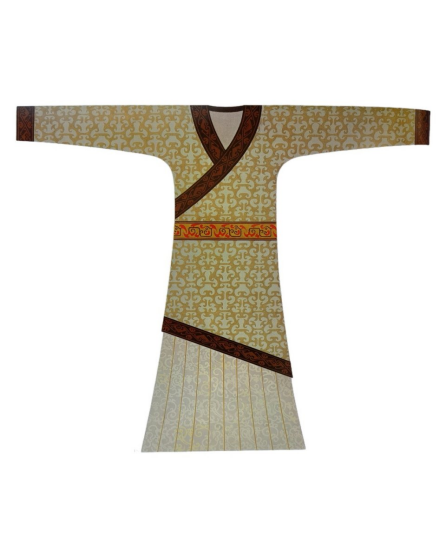With wide sleeves and flowing silk robes, Hanfu is not just a simple piece of clothing today. It is also a living scroll of Chinese history worn on the body.In the wave of Hanfu revival in China, it has not only become a common sight on daily streets. It has also become a material and cultural bridge connecting the past and the present. Whether in the cycle of seasons or the change of festivals, choosing the right Hanfu is always an important way to express yourself. Wearing Hanfu, you can feel the warmth unique to Chinese people in Chinese culture, as if traveling through thousands of years of time.

A Guide to Hanfu Outfits by Season
The four seasons are distinct, so Hanfu outfits should adapt to the time.
Spring hanfu: The temperature does not rise significantly. For this season, styles like high-waisted ruqun (a traditional top-and-skirt set) and natural-waisted ruqun are recommended. If the weather turns cool, you can layer a front-opening banbi (a short-sleeved jacket) over it. Or you can choose a thin round-collar robe.
Summer: Hanfu for summer should be bright and refreshing. Fabrics need to be light, thin and breathable. Considering these factors, Song-dynasty style beizi (a long-sleeved outer garment), pleated skirts and ruqun are perfect choices. Their soft colors and simple designs make daily activities easy. The light material also helps with heat dissipation in summer.
Autumn hanfu: The weather gradually cools down. At this time, you can wear a double-layered beizi, using fabrics with a certain thickness. Some thin Ming-dynasty Hanfu styles—such as aoqun (a jacket-and-skirt set) and robes—can handle the cool autumn air. If the temperature drops sharply, you can add a cape for warmth.
Winter: Hanfu for winter needs to be warm without losing its elegance. Choosing a Ming-dynasty Hanfu style is a good option here. Aoqun sets and robe sets are classic combinations of Ming dynasty Hanfu. Fabrics should be thickened for warmth. You can also layer a bijia (a sleeveless outer garment) or a cape to enhance warmth.
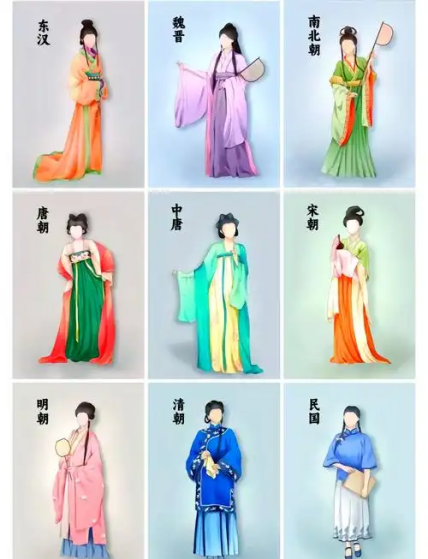
The Meaning of Hanfu Colors
Hanfu has become a model of traditional Chinese clothing. Its value is not just in its beauty. The cultural meaning , etiquette and philosophical ideas it carries are the fundamental reasons for its existence and inheritance.
The colors of Hanfu also have specific cultural connotations. They are a way to distinguish social ranks, express beliefs and show spiritual qualities.
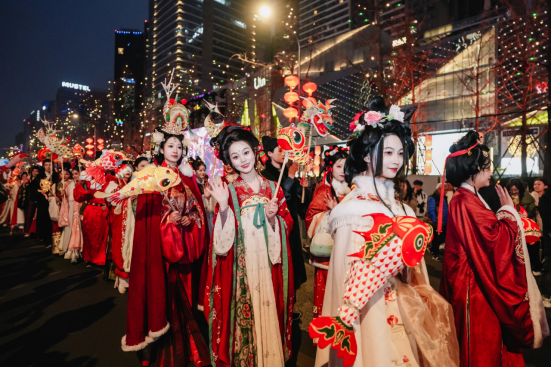
A Guide to Hanfu Outfits for Festivals
When matching Hanfu styles and choosing colors for traditional festivals, you can refer to Hanfu’s cultural meaning and color connotations.
Spring Festival: Red is the top choice. It is not only festive but also a symbol of good luck. Ming-dynasty Hanfu is especially suitable for the lively atmosphere of the Spring Festival.
Lantern Festival: You can choose red, blue or green as the main colors. The recommended style is Ming-dynasty aoqun—it is dignified and elegant.
Mid-Autumn Festival: You can choose Hanfu styles according to your preference. Tang, Song or Ming-dynasty styles are all fine. But look for designs that include Mid-Autumn elements, such as the moon, jade rabbits and osmanthus flowers. Colors should be soft tones like light yellow, off-white and pale green.
As the Mid-Autumn Festival approaches, many Hanfu enthusiasts want to wear Hanfu to experience a unique festive atmosphere. The Mid-Autumn Festival has a long history and rich cultural connotations, with various celebration activities. Wearing Hanfu during this festival not only adds joy but also deepens your sense of immersion in traditional culture.
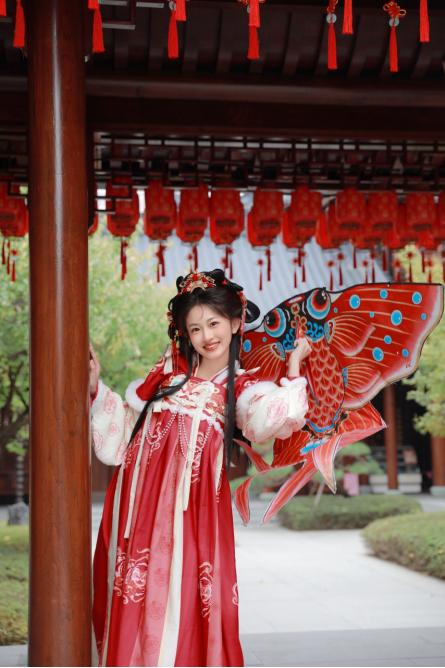
How to wear hanfu in Chinese New Year
Chinese New Year is an important occasion for seasonal Hanfu outfits. Here’s how to choose Hanfu colors and styles for it:
We all know red is the main color for Chinese New Year—it symbolizes festivity and auspiciousness. But red is not the only option. Other tinted colors like orange and fuchsia are also popular for New Year Hanfu.
For style matching: A red upper jacket with a blue or green lower mamianqun (a pleated skirt with a “horse-face” design) creates a contrasting yet harmonious look. Brocade mamianqun with gold patterns is also a popular choice. The combination of gold and red adds a touch of luxury.
In recent years, to keep up with the wave of cultural revival and build a symbol of cultural confidence, many places have used Hanfu as a starting point to hold promotion events like Hanfu Day. This has made Hanfu (as a cultural IP) known and loved by more people.
In the past, women were the main group with purchasing power and influence in the clothing sector. But with the promotion of more Hanfu Day events—featuring diverse styles for both men and women—more and more men have joined in promoting and loving Hanfu. This has given men more chances to participate in Hanfu culture and helped spread Chinese culture to more male audiences.
The reach of Chinese culture promotion is expanding, and its audience is growing. It is believed that in the future, a series of Chinese cultural elements (represented by Hanfu) will become known to the world. More people will appreciate the infinite charm of Chinese culture.
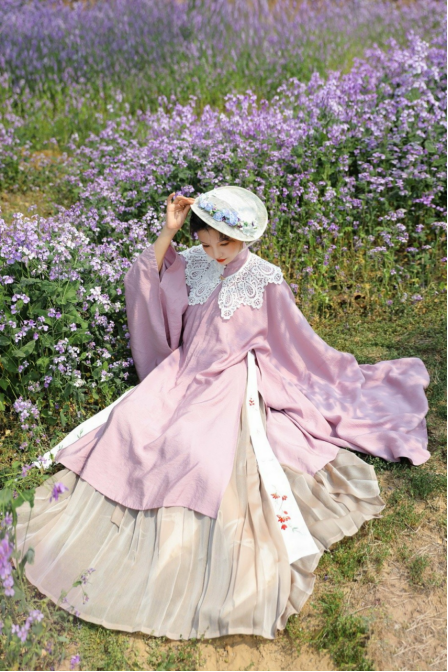
Common Questions
Through market research, our team found that most consumers have the following questions about wearing Hanfu in festivals and seasons:
- Is the wide design of Hanfu suitable for modern festivals?
Ancient Hanfu is known for its wide robes and large sleeves. But modern Hanfu designs have evolved to meet people’s daily needs. Some Hanfu styles are indeed wide, but they are mostly formal wear for important occasions (like weddings and festivals). It is impossible to wear floor-length clothes every day. Now, there are daily-friendly styles on the market, such as shuhu (a short jacket with trousers), Song-dynasty xuanqun (a swirling skirt) and beizi. There is no rule that you must style your hair like ancient people or wear complicated jewelry with Hanfu. And Hanfu prices are very affordable.
2. Which season is most suitable for wearing Hanfu?
Personally, I think autumn is the best season for Hanfu. It is not as sweltering as summer, nor as freezing as winter. A simple long shirt with a mamianqun makes a very classic look. If you want it to be more distinctive, you can add a yunjian (a“cloud shoulder
”accessory) and a flat cap. If you have other styling ideas, feel free to leave a message-I will share them with everyone.

